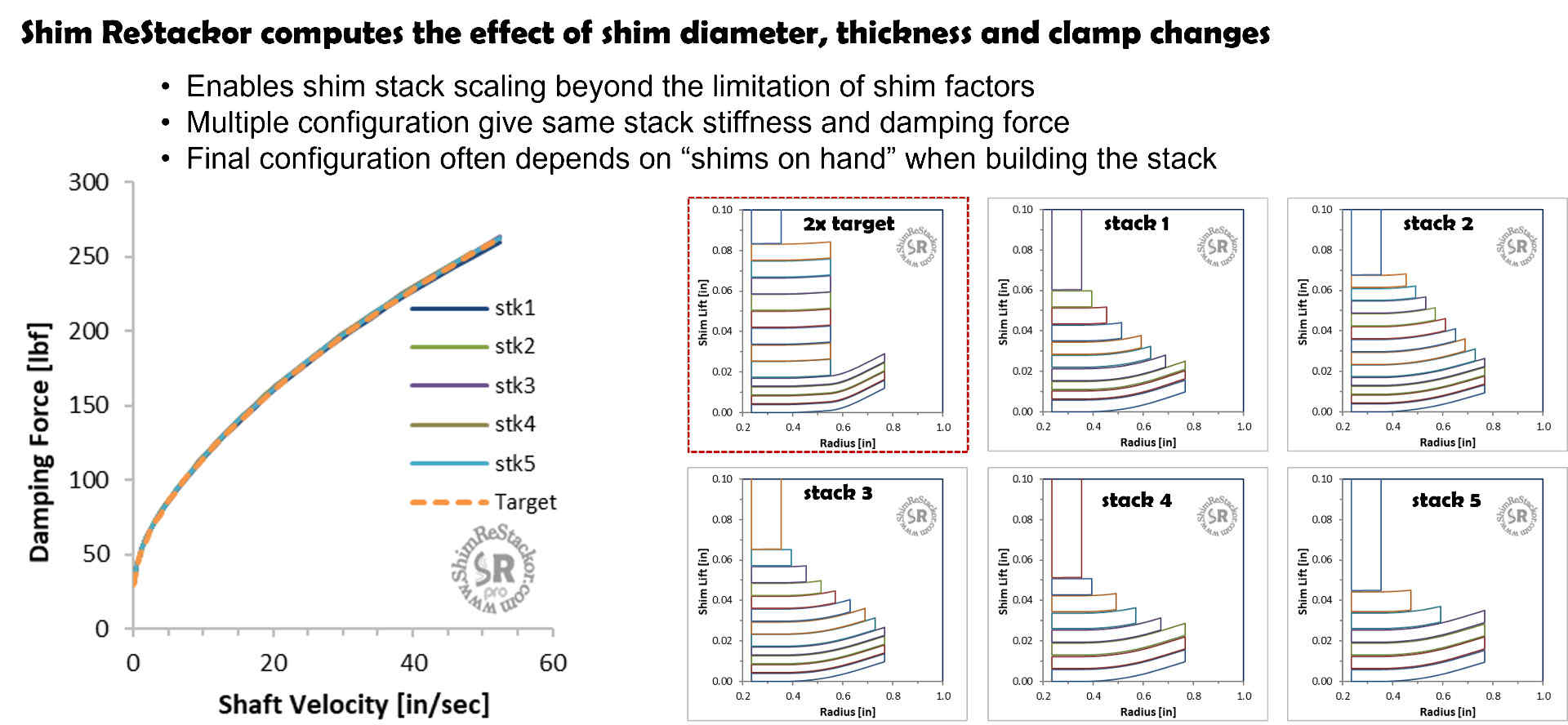Shim factors estimate the stiffness of a single shim relative to the stiffness of a 0.1 mm thick shim with the same diameter. Shim factors are derived from the Belleville spring theory developed by General Motors engineers Almen and Laszlo in 1936. Shim stiffness has a complex dependence on shim OD, ID, thickness and edge lift height.
The function, f(d.od/d.id) in the equation below, is a long algebraic expression describing the effect of inside to outside diameter ratio on the shim stiffness.

Shim factors simplify the Belleville washer equation by evaluating spring stiffness as a ratio relative to a 0.1 mm thick shim. Computing spring stiffness as a ratio cancels out the complex terms in the Almen and Laszlo equation making stiffness a simple function of shim thickness cubed.
Shim factor tables tabulate the ratio of shim thickness cubed relative to the reference 0.1 mm thick shim. Shim factors require the shims to have the same OD, ID and edge lift (h/t) ratio. Comparing shims at a constant edge lift ratio (h/t) requires thick shims to have a higher edge lift to match the (h/t) ratio of the reference 0.1 mm thick shim.
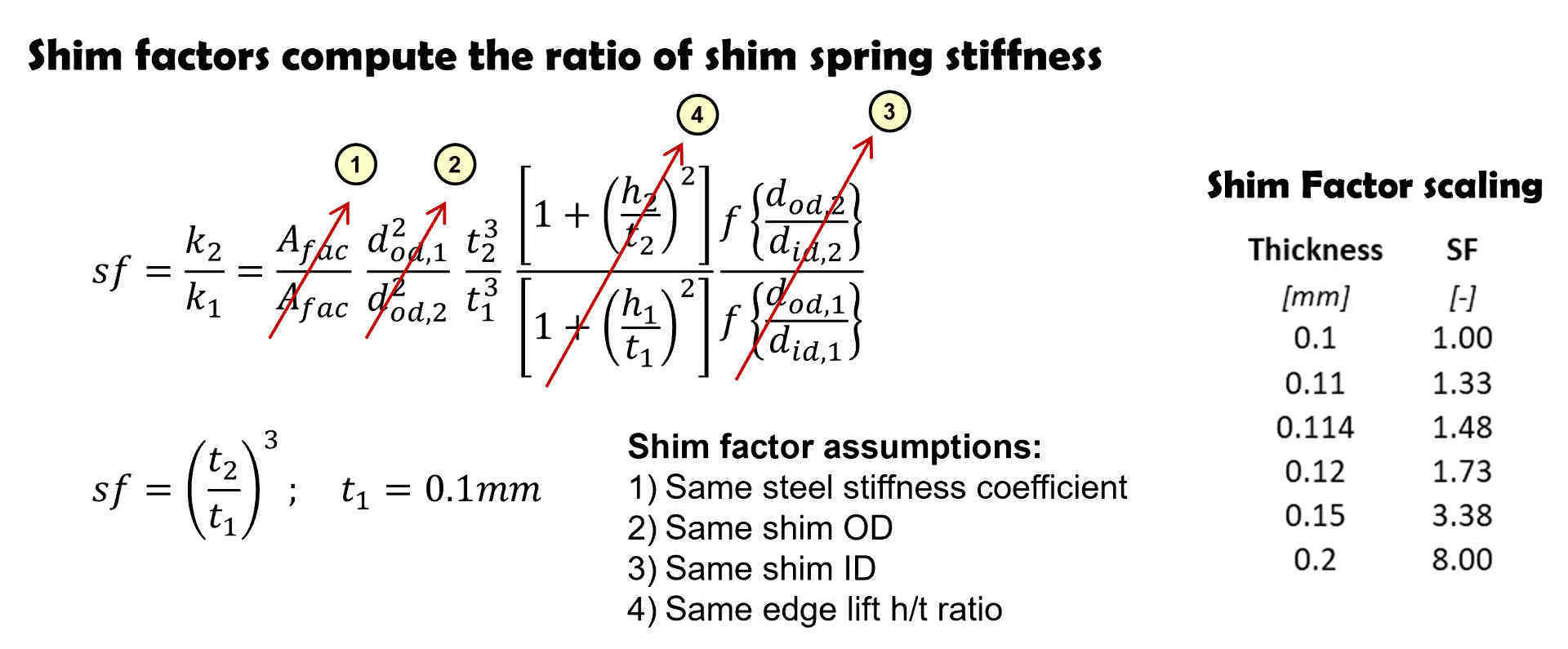
Shim factors show a 0.11 mm shim is equivalent to 1.33 0.1 mm shims. So, a stack of four 0.1 mm shims (SF= 4*1) is equivalent to a stack of three 0.11 mm shims (SF= 3*1.33= 3.99).
Likewise, a 0.2 mm thick shim is equivalent to eight 0.1 mm shims. So, a stack of eight 0.1 mm face shims (8*1.0= 8.0) could be replaced by a single 0.2 mm shim.
Shim factor example
KYB forks use 0.114 mm thick shims with a shim factor of 1.48.
Aftermarket 0.1 mm shims have a shim factor of 1.0. How many 0.1 mm shims are needed to replace two 0.114 mm KYB shims?
- Two KYB shims have a shim factor of 2*1.48= 2.96
- Three 0.1 shims have a shim factor of 3*1.0= 3.0
- Three 0.1 shims are approximately equivalent to 2*0.114 mm KYB shims

Running the example with Shim ReStackor shows the two shim stacks are approximately equivalent. The 2*0.114 face shims are slightly softer producing more flow area and less damping force as expected by shim factors and Shim ReStackor calculations.
KYB shims are often reported as 0.11, 0.114 or 0.12 mm. Shim factors show that thickness range makes a large difference in stiffness emphasizing the importance of using the correct thickness, typically 0.114 mm for KYB shims.
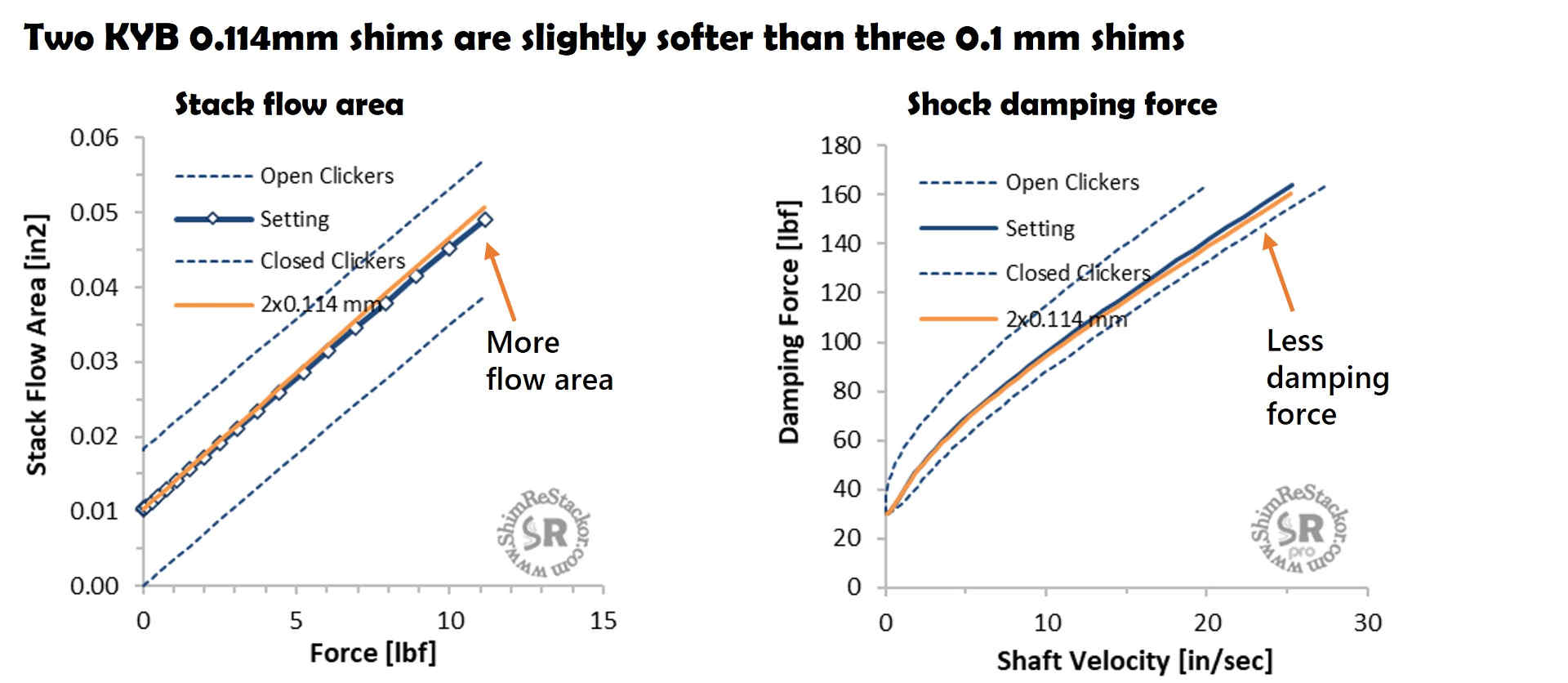
Double the face shim stiffness
Baseline: Two 0.1 mm face shims with a shim factor of 2*1.0= 2.
Doubling the number of face shims should make the shim stack twice as stiff. Shim factor: 4*1.0= 4.
Running the case through Shim ReStackor shows doubling the face shims did not double the shim stack stiffness. The reason is the stiffer face shims forced deflection of the stack clamp and the clamp deflection softened the shim stack.
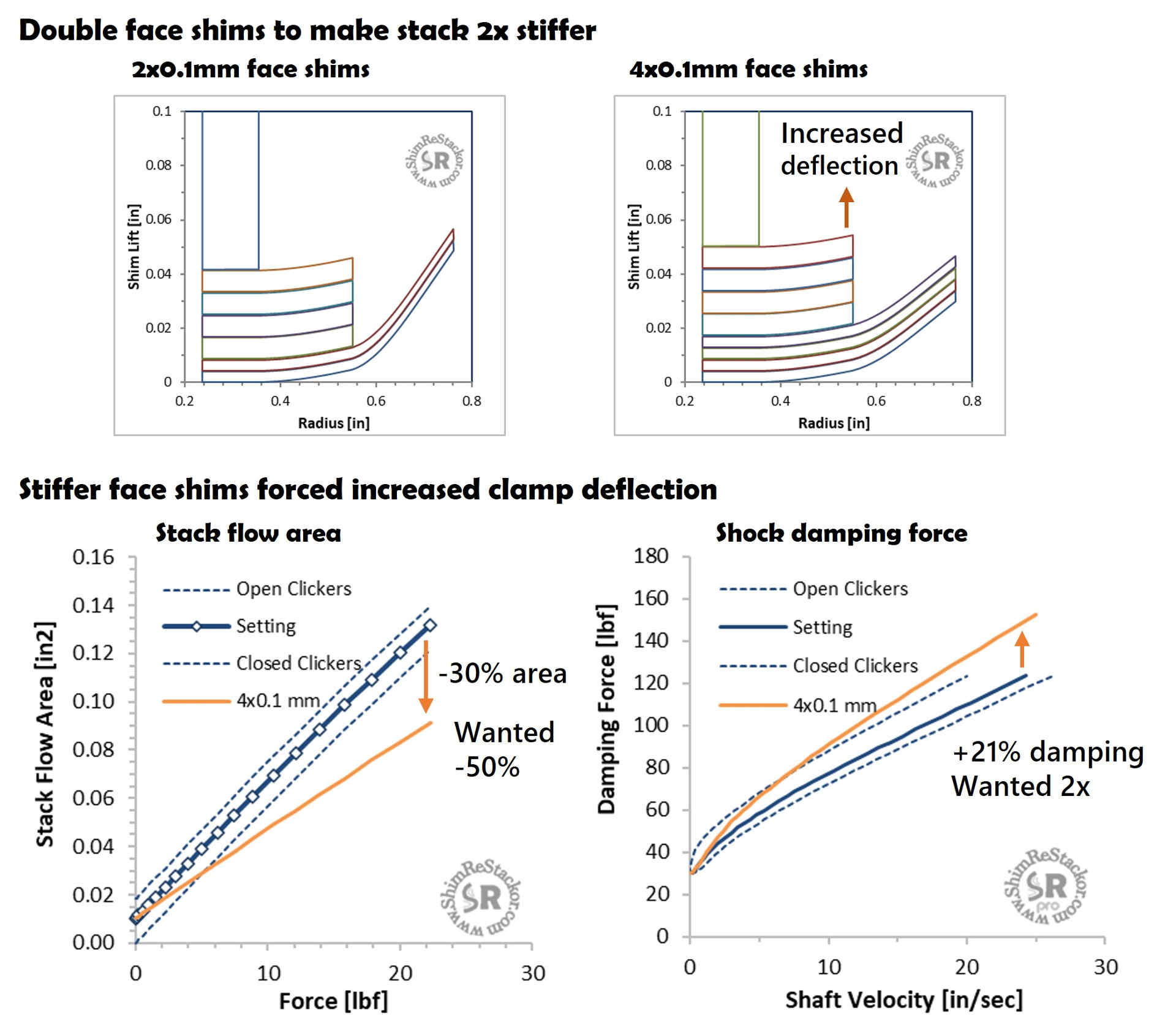
The example illustrates a common shim factor tuning problem. Stack stiffness is the combined result of the stack face shims, stack taper and the stack clamp. Doubling the stiffness of one component does not double the stiffness of the entire stack.
The tuning process is much easier with Shim ReStackor. Shim ReStackor FEA calculations evaluate the entire shim stack including the stack taper and clamp shims making tuning simple, easy, and intuitive.
Double everything
Baseline: Doubling the number of clamp and stack face shims doubles the stack stiffness and cuts the shim stack flow area in half. However, doubling the stack stiffness does not double the damping force.
Fluid dynamics dictates a nonlinear relationship between stack stiffness and damping force. Doubling the stack stiffness only produces a 41% increase in damping force. Doubling the damping force requires a much stiffer stack.
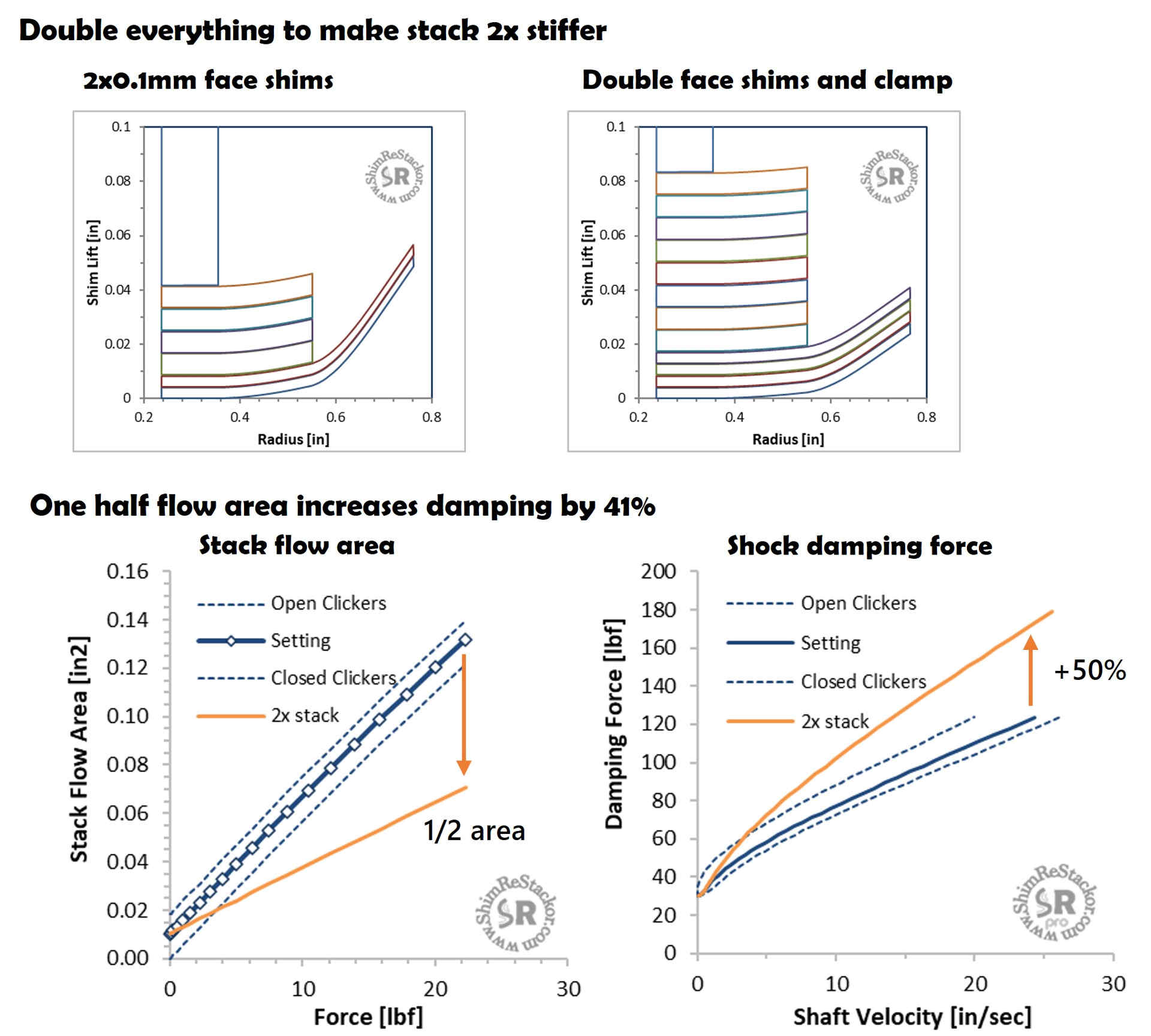
Tuning with Shim ReStackor
Tuning damping force with Shim ReStackor is much easier. Tuning to a specific damping force target is simply a matter of adding or removing shims until the desired damping force target is achieved.
Multiple shim stack configurations produce the same damping force curve. Identifying those tuning options is easy with Shim ReStackor. The final shim stack configuration is often the result of the shims that happened to be on-hand when assembling the shim stack.
